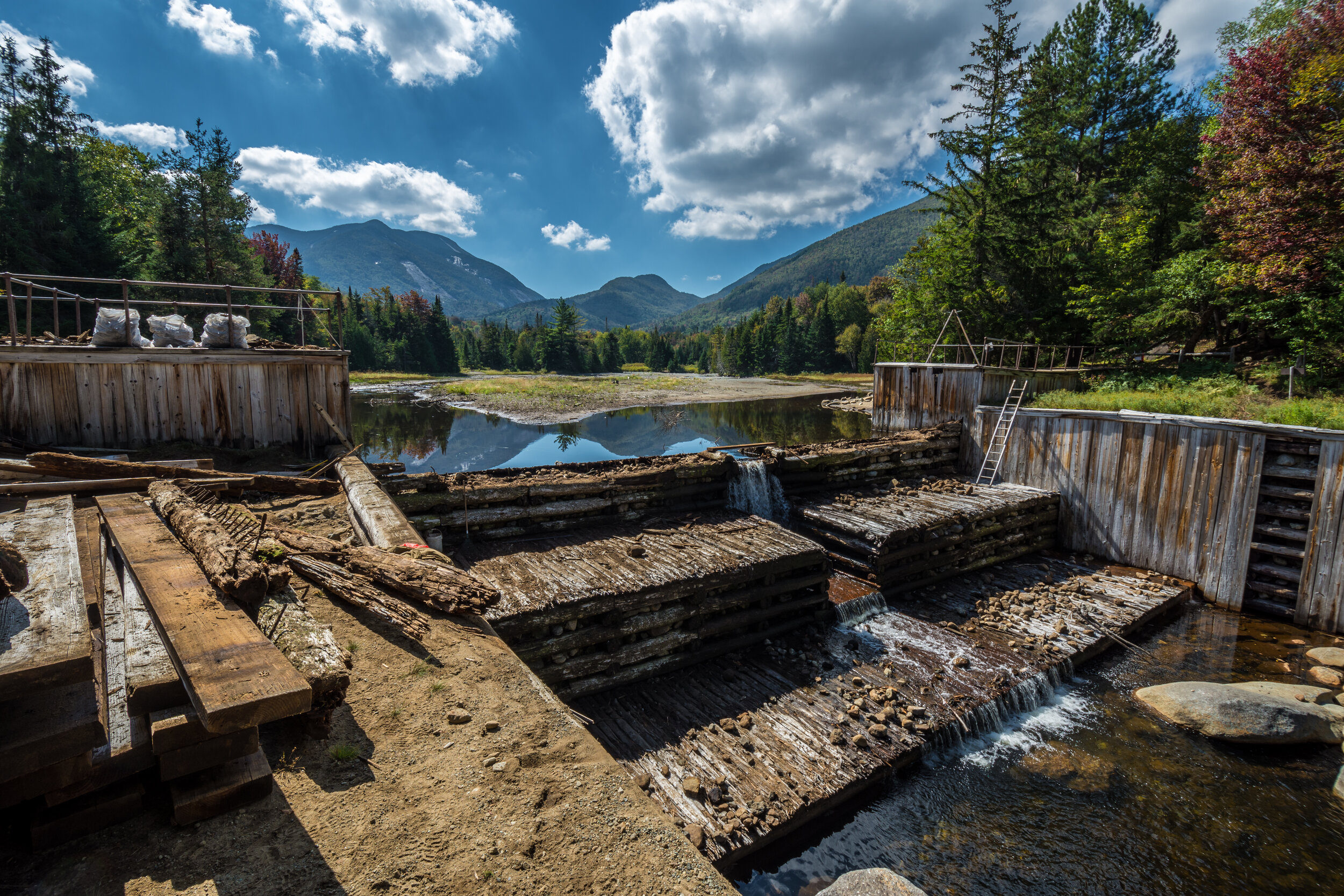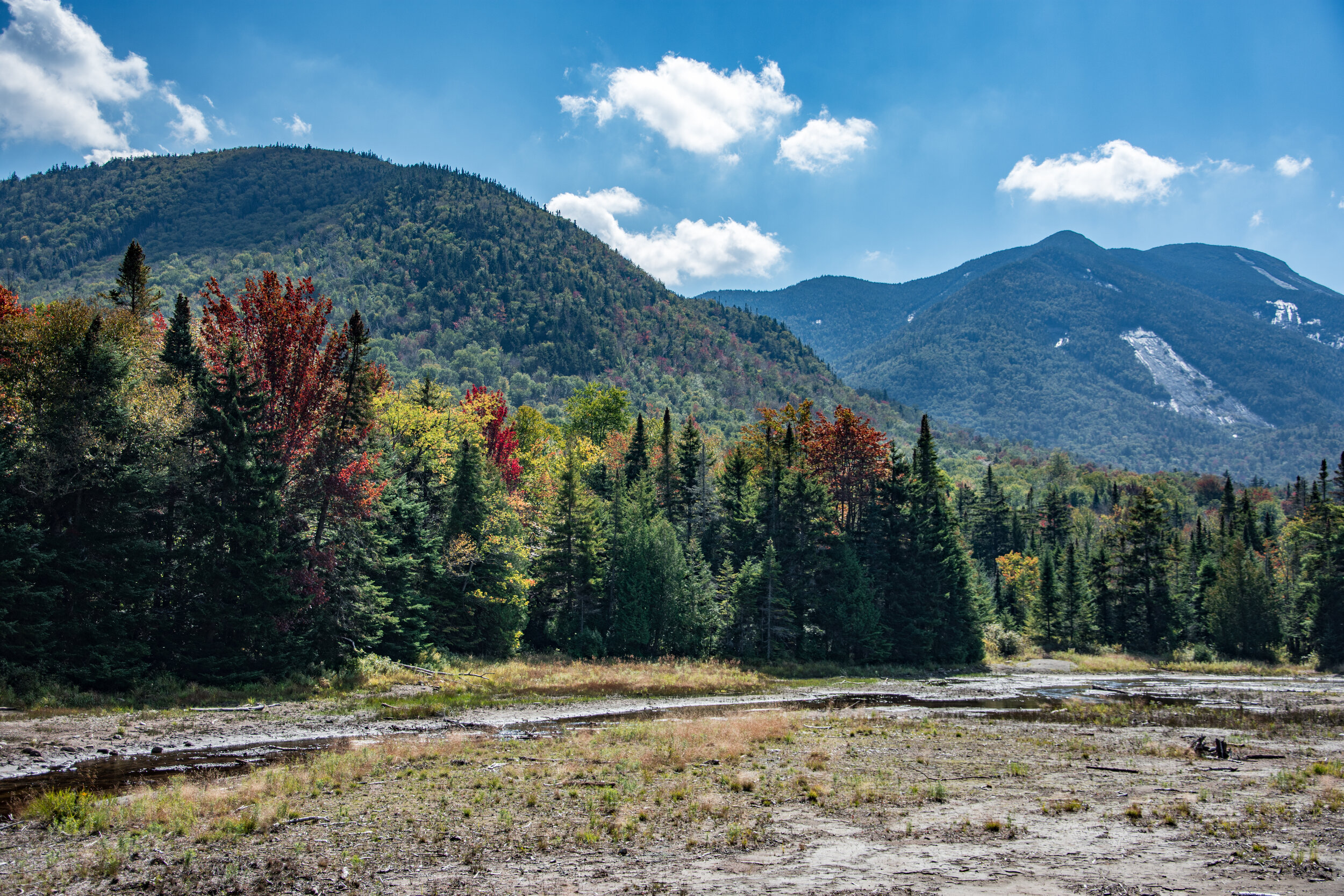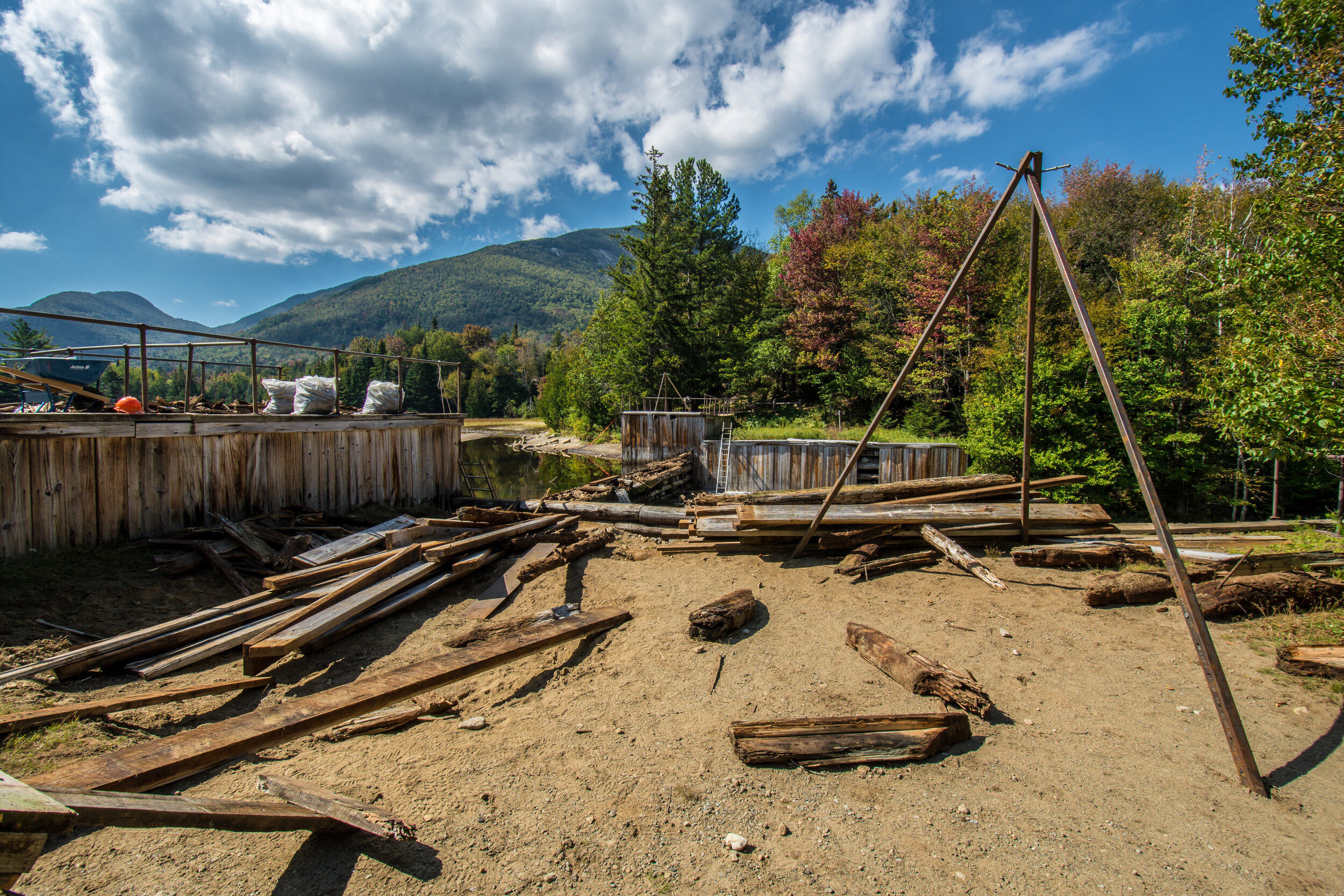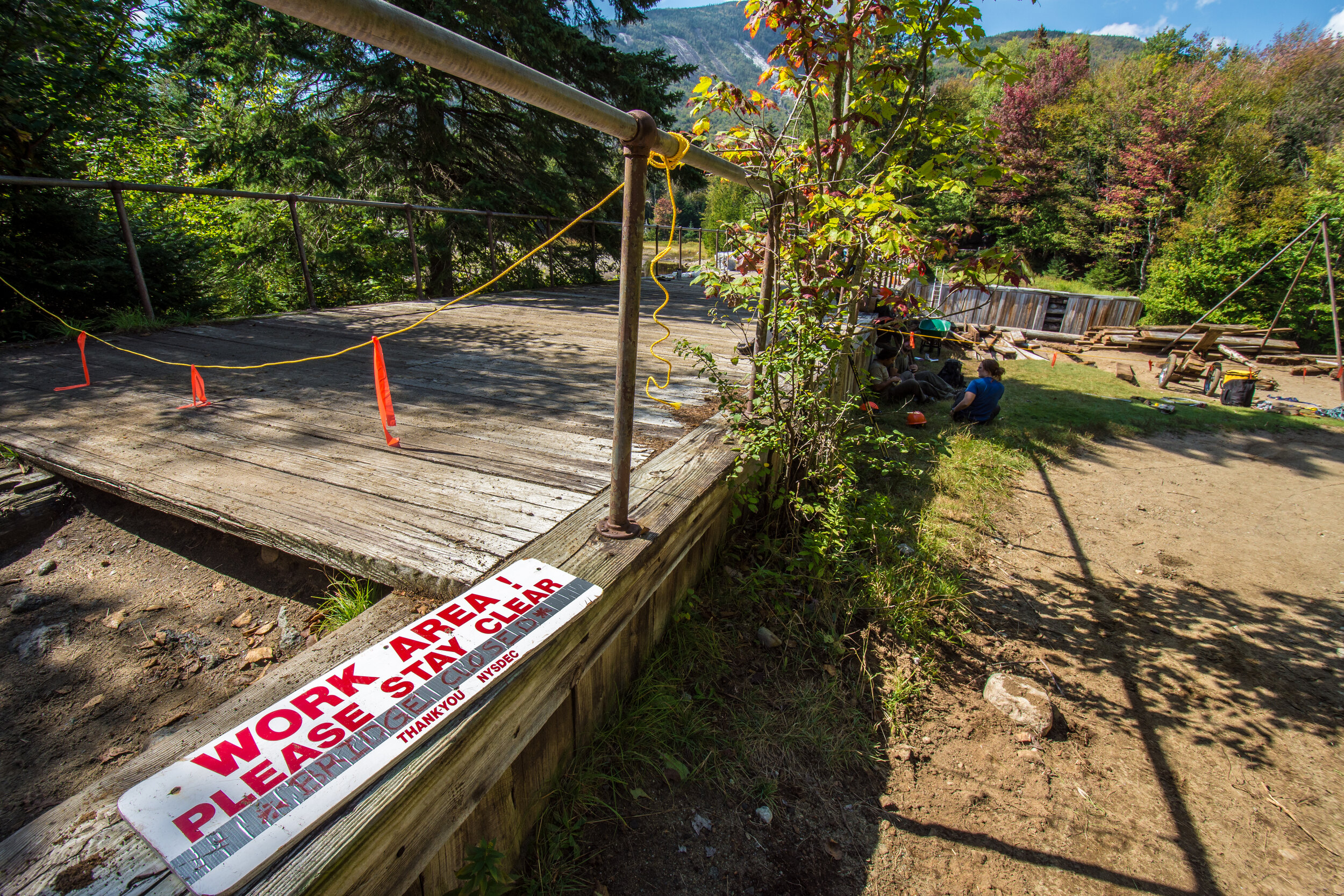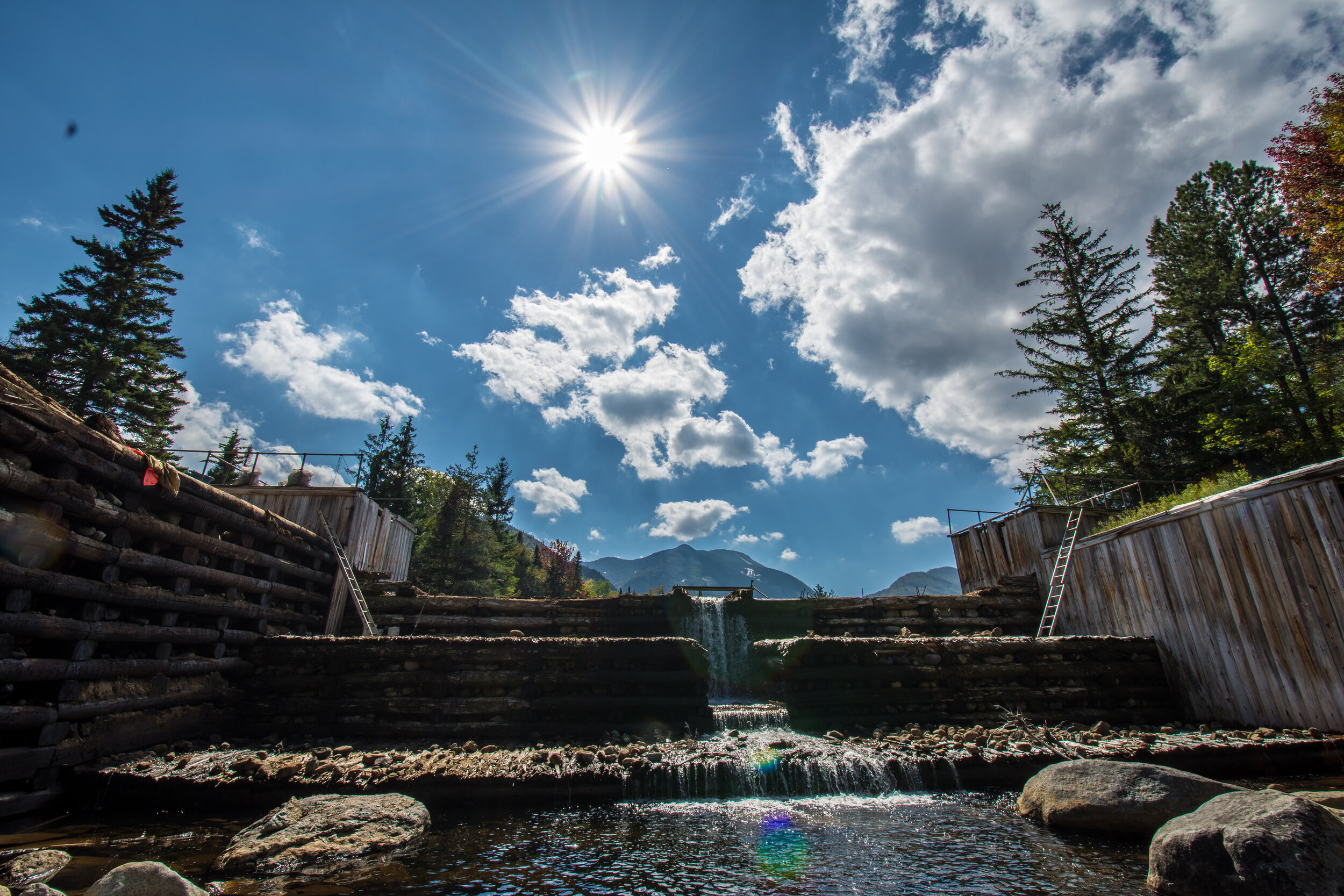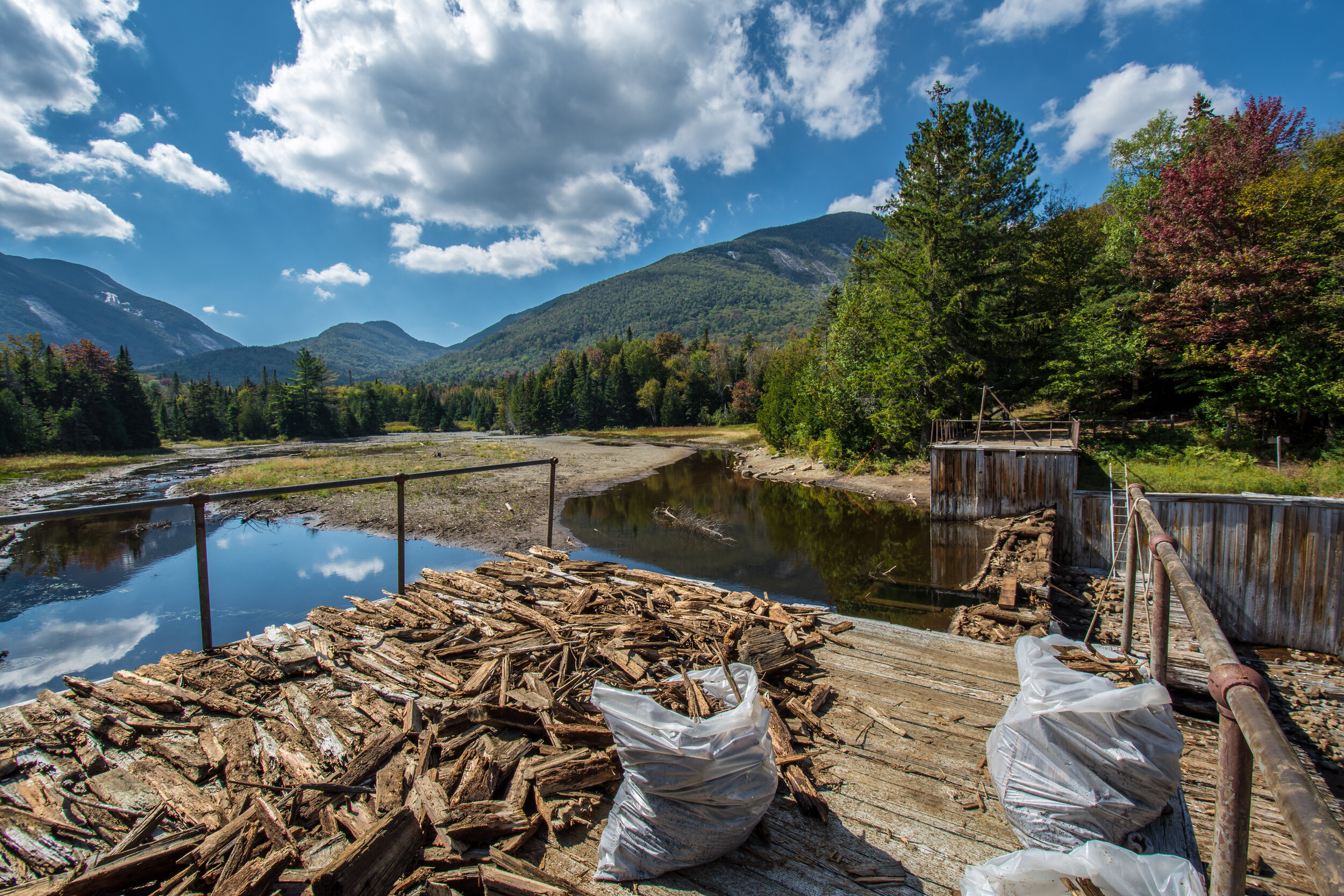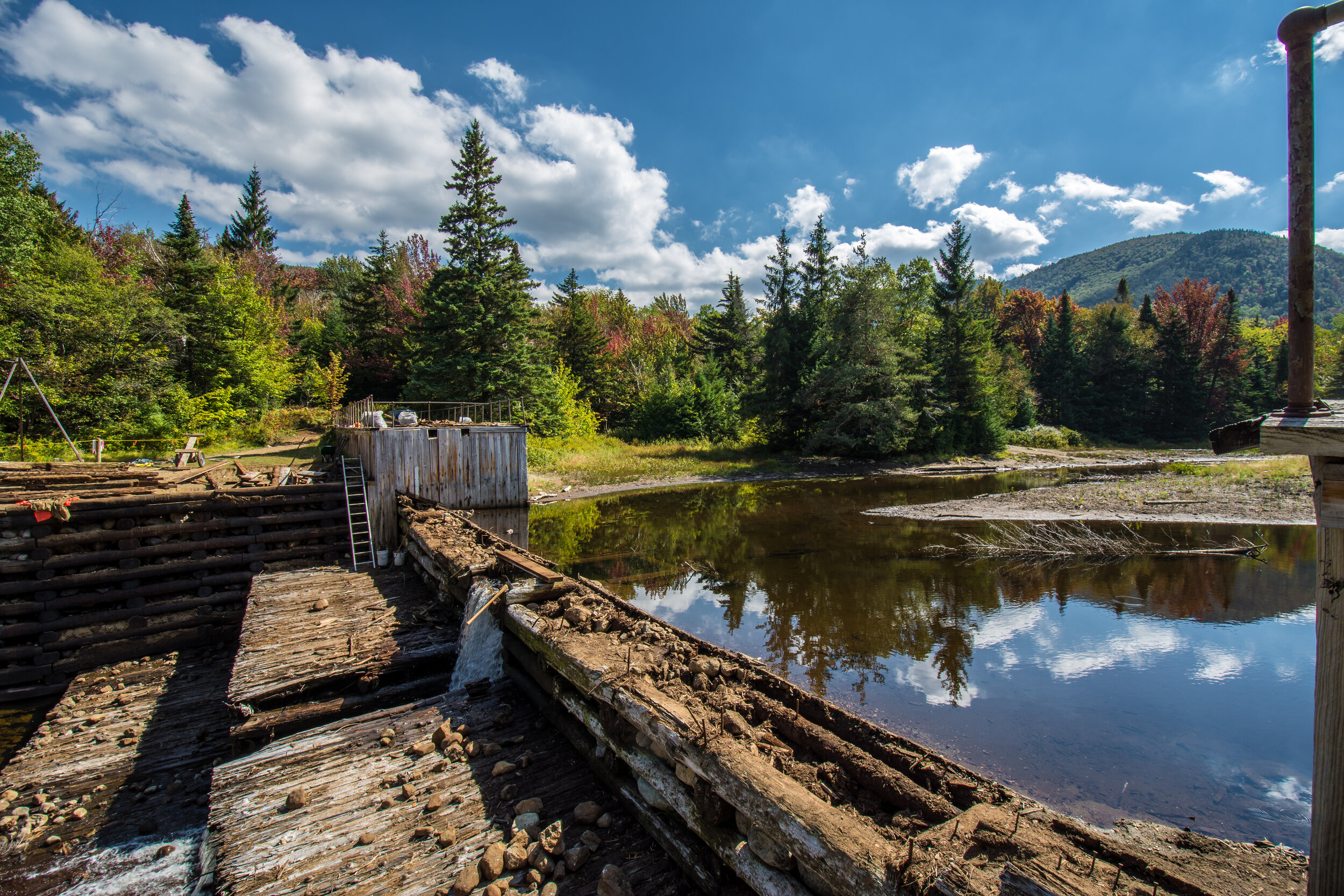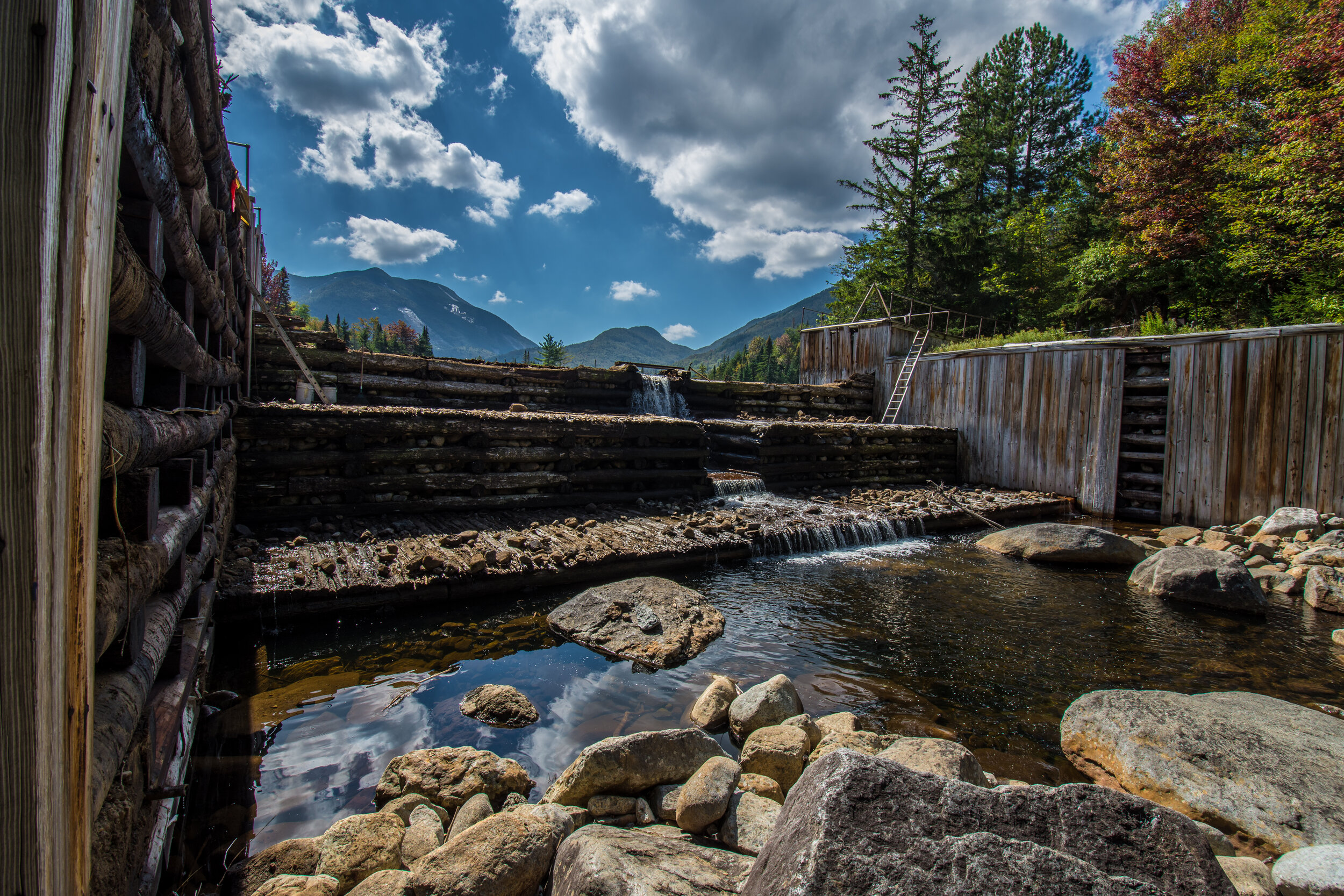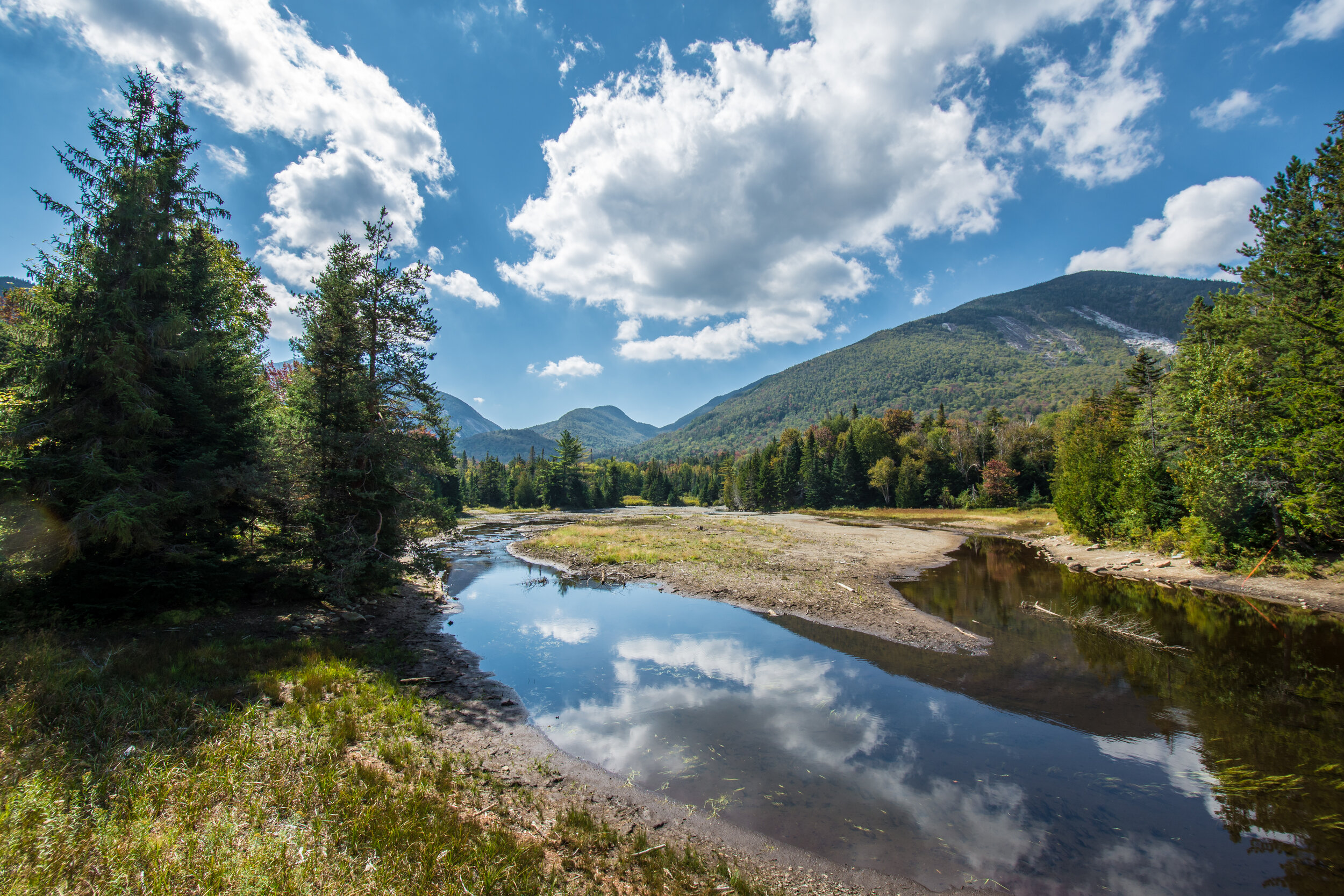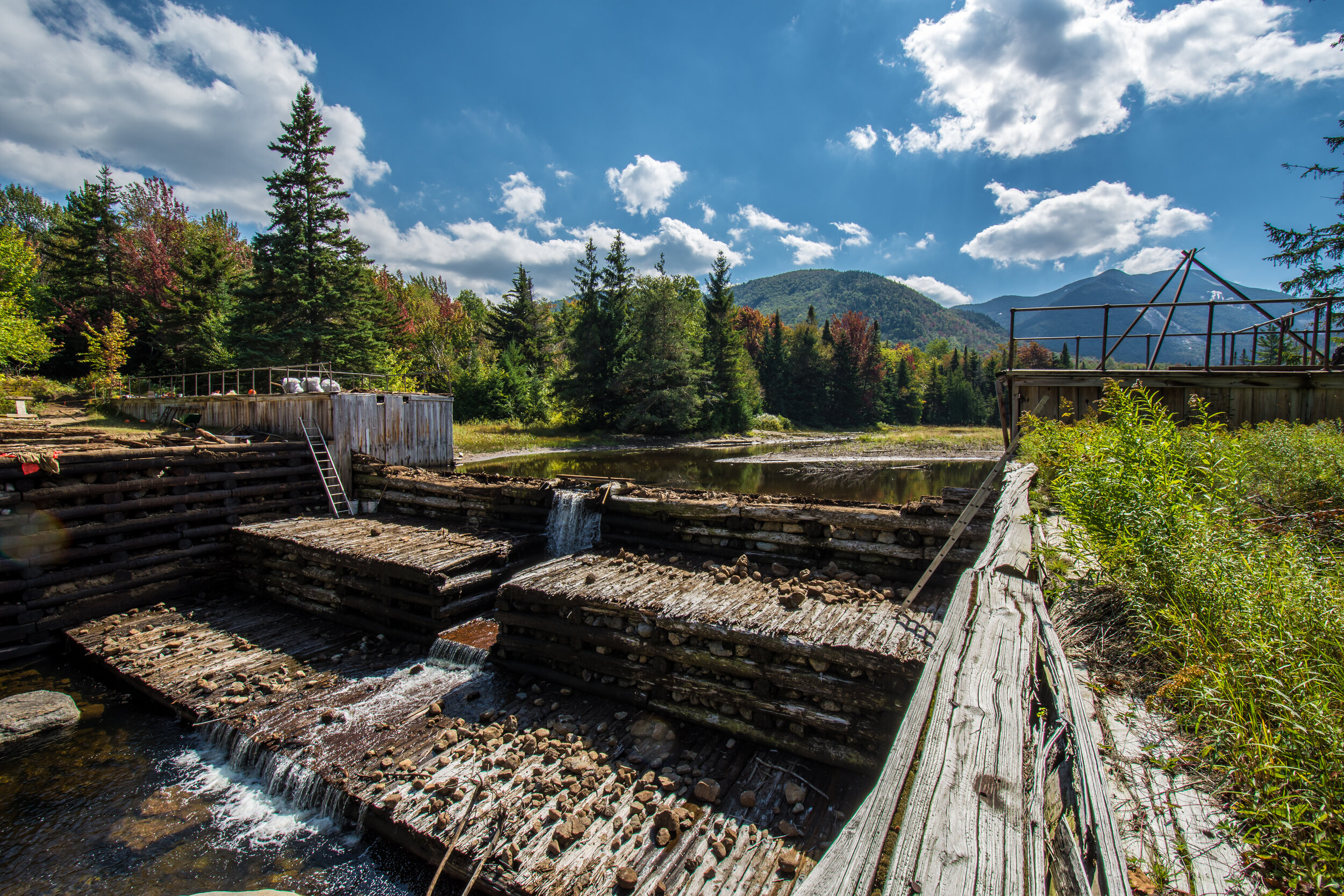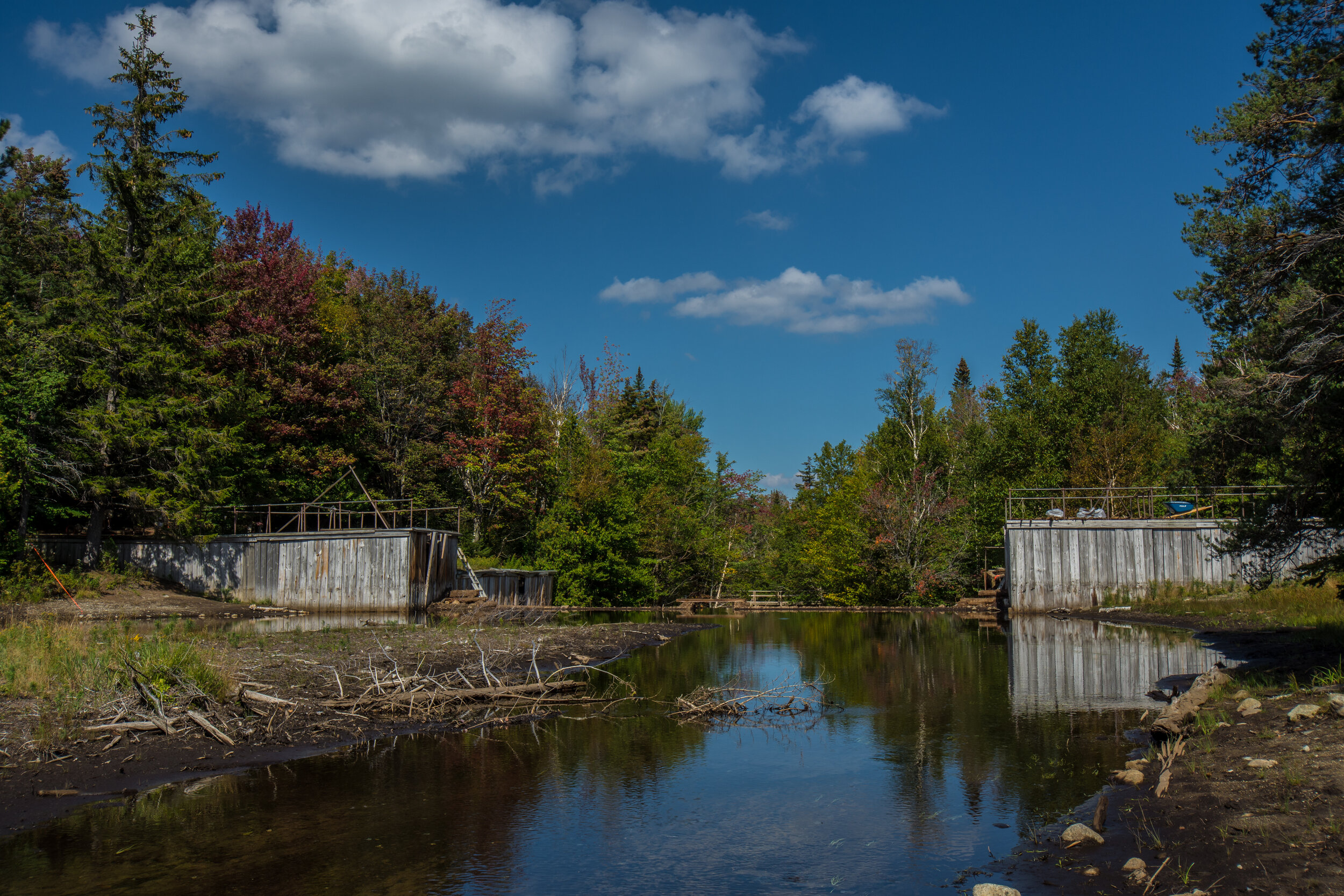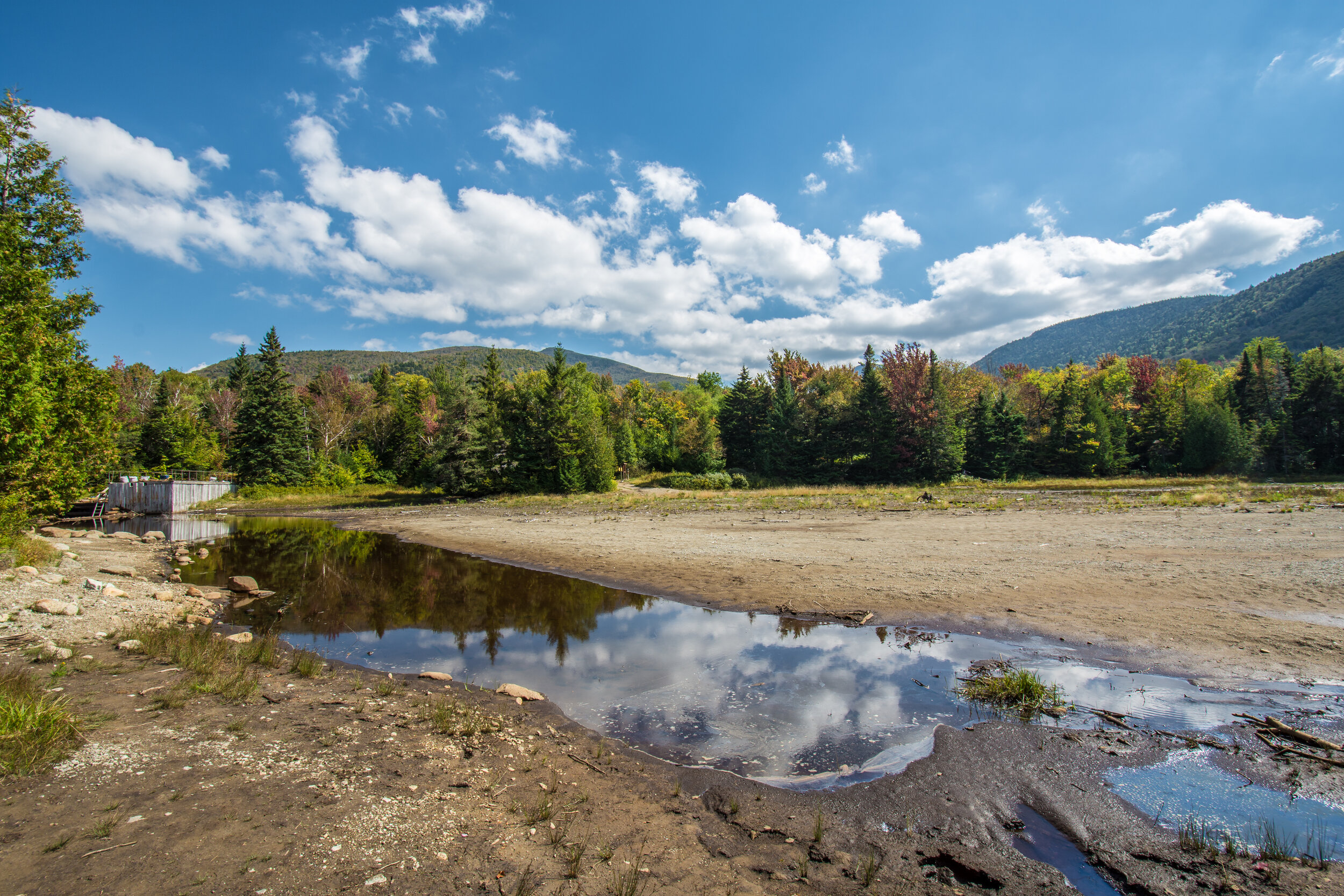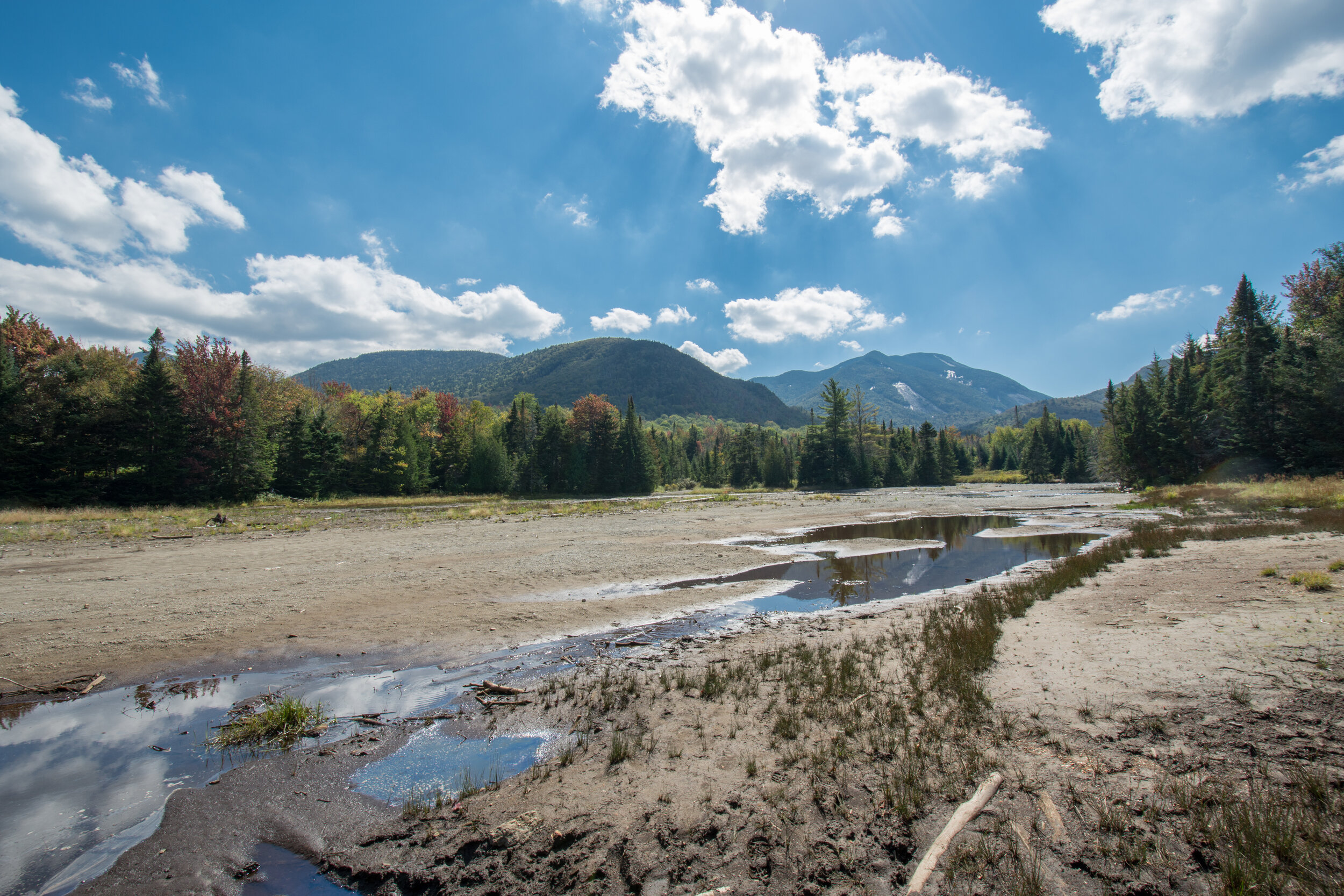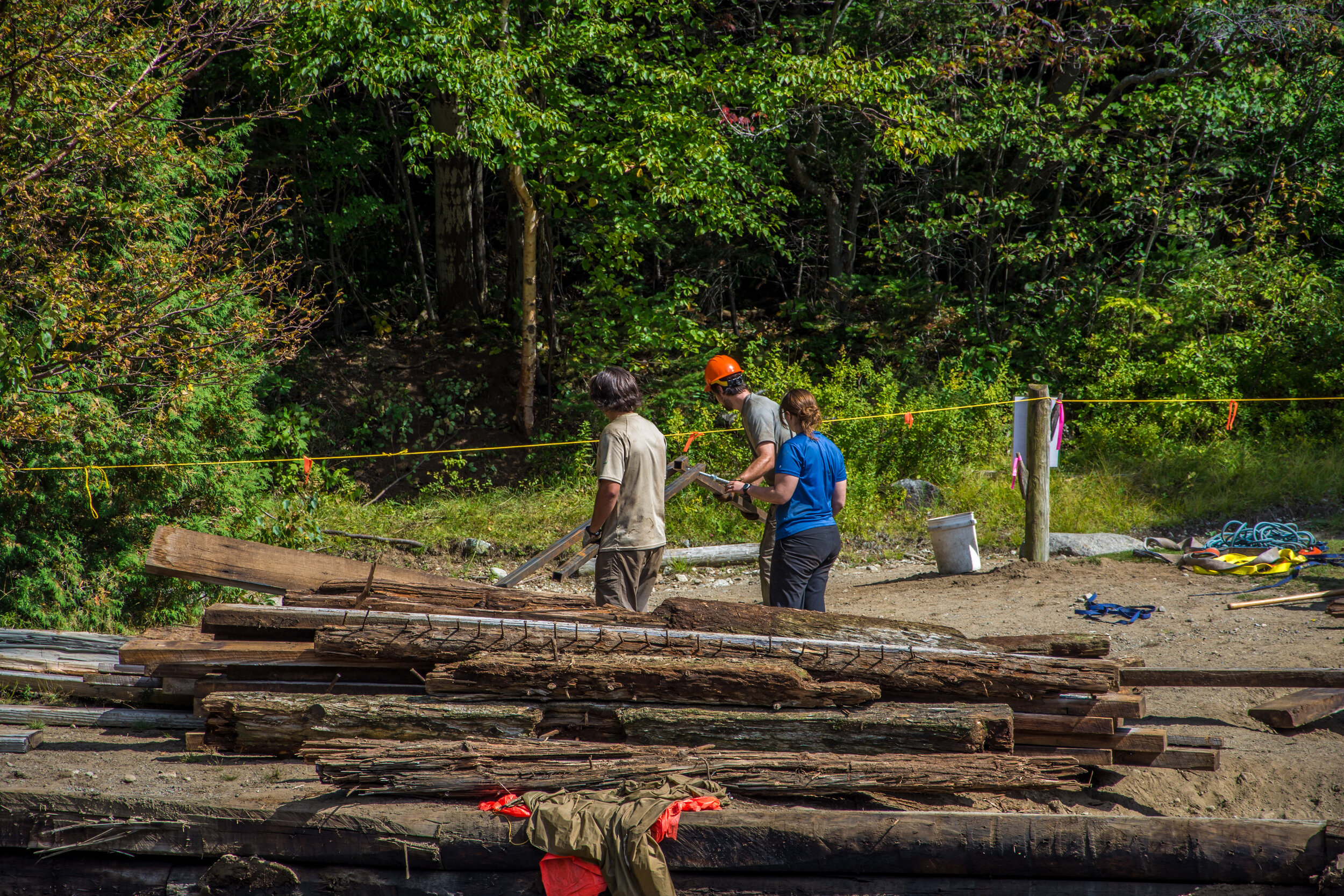Marcy Dam Removal
This year the Department of Environmental Conservation (DEC) stared the process of removing Marcy Dam. The dam suffered significant damage to the bridge and splashboards during Tropical Storm Irene in August 2011. DEC decided that the cost of repair was too great and that the dam itself did not conform with the wilderness land classification applied to the land upon which it sits. The gut reaction by many is disgust and anger. People feel that the DEC is needlessly removing and altering an iconic location within the High Peaks Wilderness.
What we must not forget is that Marcy Dam was built out of a need to transport timber down Marcy Brook and the West Branch of the Ausable to mills located in Au Sable Forks. The great fire of 1903 wiped out a lot of logging operations in the area, but also set forth a boom in timber salvaging, particularly in the area surrounding Marcy Dam. Once all of the salvageable timber was harvested loggers moved uphill towards Indian Falls to harvest live trees. During this entire time Marcy Dam was used to pond and flush logs downstream to the mills.
The Forest Preserve was created precisely because of the over exploitation of timber resources mentioned above. Marcy Dam is literally a physical manifestation of the problems that the park was created to combat. The dam should have been removed long ago, as its original purpose was no longer warranted. Instead, the dam benefited from a general mindset across the nation that every river should be controlled and manipulated to benefit man, with little regard to the ecological impacts of such projects. The CCC "improved" Marcy Dam in the 1930s and the Department of Environmental Conservation did more work in the 1970s.
The design of Marcy Dam, along with most dams, destined the pond for a relatively short life. The dam and pond were smack in the middle of a rather significant river channel and the pond was relatively shallow. Rivers are meant to transport material, namely sediment, downstream. When you put a dam across a river it stops this natural movement of sediment, causing it to accumulate above the dam and eventually fill in the pond. The pond held back by Marcy Dam was very near the end of its life when the dam was damaged by Tropical Storm Irene. Restoring the pond would have required a massive dredging operation in the middle of the wilderness. Or a taller dam would have to be built. Either option would require further dredging at some later point.
When reflecting on the criticism to remove the dam I am often left wondering what the response would be to the construction of a new dam in the middle of the High Peaks Wilderness. What if the DEC proposed to dam the Johns Brook Valley? Would the same individuals opposed to the removal of Marcy Dam be speaking out in defense of the preservation of this area? What if Marcy Dam had never been built, but there was now a proposal to site a dam in that location? I doubt many people would support any of these proposals and there would be significant opposition to them.
The removal of Marcy Dam is a quite beautiful act and one that reflects our relatively new understanding that we benefit most when we work with natural systems, not against them. It is an acknowledgement and further affirmation of the fact that we no longer believe that forests exist solely to be harvested for their timber and all rivers don't need to be impounded for our benefit. Our society is becoming increasingly aware that intact ecosystems are necessary for our survival. In fact, New York State proved to be quite progressive in this understanding when they created the forest preserve over 100 years ago.
So lets mourn the loss of the iconic pond retained by Marcy Dam while at the same time rejoicing in the fact that this area will be given the chance to return to its natural state. Let's also be proud to live in a state that is capable of recognizing the value of wilderness and is willing to take steps to restore it.
